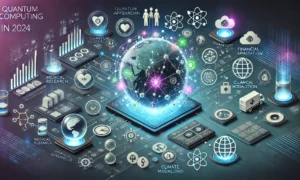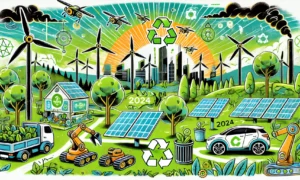Discover how AI Chat GPT works, the technology behind it, and how it generates human-like responses to questions and prompts.
Introduction
Artificial Intelligence (AI) has made tremendous strides, and one of its most exciting advancements is Chat GPT. OpenAI’s Chat GPT has become widely known for its ability to hold natural conversations, answer questions, generate content, and assist in countless other tasks. But how does this AI-powered tool work, and what technology powers it? This article explores how AI Chat GPT operates, the core technologies it relies on, and what makes it so advanced.
Understanding the Foundation: What is Chat GPT?
Chat GPT, short for “Generative Pre-trained Transformer,” is an AI language model developed by OpenAI. It is designed to generate human-like responses by understanding and predicting language patterns. Its main function is to process and generate text, responding to prompts in ways that feel conversational and natural.
The Role of Natural Language Processing (NLP)
At its core, Chat GPT leverages Natural Language Processing (NLP), a subset of AI that helps machines understand, interpret, and respond to human language. NLP allows the model to recognize grammar, meaning, and contextual subtleties, enabling it to engage in meaningful conversations. Key NLP techniques involved include:
- Tokenization: Breaking down sentences into words or smaller units (tokens) to understand each component of the text.
- Sentiment Analysis: Determining the sentiment or tone of the text, such as joy, anger, or sarcasm.
- Named Entity Recognition (NER): Identifying specific names, places, dates, etc., for context.
These components enable Chat GPT to interpret language with depth, supporting its ability to answer questions accurately.
The Technology Behind Chat GPT: Transformer Models
Chat GPT is built using transformer architecture — a type of deep learning model introduced in the influential 2017 paper, “Attention Is All You Need” by Google researchers. Transformer models process text by weighing the importance of different words in a sentence and capturing long-range dependencies, such as understanding a sentence’s meaning in relation to previous sentences.
The Transformer’s Key Features:
- Self-Attention Mechanism: This allows the model to focus on specific parts of an input sequence, helping it understand relationships between words even if they’re far apart.
- Multi-Layer Structure: Composed of multiple layers of self-attention and feed-forward neural networks, enabling complex language understanding.
These mechanisms allow transformer models, like Chat GPT, to generate coherent and contextually appropriate responses.
The Pre-Training and Fine-Tuning Process
Chat GPT undergoes two primary stages to perform its tasks accurately:
1. Pre-Training
During the pre-training phase, Chat GPT is exposed to a large dataset of text from diverse sources, such as books, websites, and articles. This phase enables the model to learn:
- Grammar and Syntax: Basic structure and rules of language.
- Common Facts and Knowledge: General information that can be recalled for answering factual questions.
- Contextual Cues: How words and phrases fit together in different contexts.
In this stage, the model’s objective is simply to predict the next word in a sentence, learning language structure without specific tasks in mind.
2. Fine-Tuning with Supervised Learning
After pre-training, the model undergoes a fine-tuning phase, where it is exposed to specific question-answer pairs and other dialogue structures. This phase allows it to understand common conversational patterns, such as:
- Question-Answering: Responding to questions with relevant answers.
- Instruction Following: Complying with user commands effectively.
During fine-tuning, human reviewers often step in, providing feedback on the model’s responses to improve its accuracy and reduce biased or inappropriate outputs.
Reinforcement Learning from Human Feedback (RLHF)
To further refine Chat GPT’s abilities, it uses Reinforcement Learning from Human Feedback (RLHF). In this process, human trainers rate the model’s responses based on quality, accuracy, and relevance. The AI uses these ratings to adjust its future responses, improving over time through repeated exposure and feedback.
How Does Chat GPT Generate Responses?
When a user inputs a prompt, Chat GPT processes it as follows:
- Tokenization of Input: The input prompt is tokenized to break it down into smaller units.
- Contextual Analysis: The transformer model analyzes the context, identifying the relationships between tokens.
- Generating a Prediction: Based on its training data, the model predicts the most likely next word or sequence of words.
- Iterative Generation: This process repeats until the model generates a complete and coherent response.
This process happens almost instantaneously, allowing for real-time conversations.
Limitations and Challenges of Chat GPT
Despite its strengths, Chat GPT faces certain limitations:
- Lack of True Understanding: While it appears to understand text, Chat GPT doesn’t “understand” in the human sense; it only predicts patterns based on data.
- Inaccuracies and Biases: It may produce incorrect information or reflect biases present in the data it was trained on.
- Dependency on Quality of Input: Vague or ambiguous inputs can result in less accurate responses, as the model relies heavily on clear context.
Ethical Considerations and Safety Measures
To address potential risks, developers implement various safety measures, including:
- Content Filtering: Monitoring and filtering out inappropriate or harmful responses.
- Bias Reduction: Adjusting training methods and feedback mechanisms to minimize biased outputs.
- Transparency: Making users aware of the limitations and best uses of AI tools like Chat GPT.
Future Developments in AI Language Models
AI and language models are advancing quickly, with research focused on making them more reliable and contextually aware. Potential advancements include:
- Improved Context Understanding: Next-generation models may better understand nuanced and multi-turn conversations.
- Enhanced Ethical Safeguards: Future models may incorporate more robust filters to handle complex ethical issues.
- Greater Customization: Personalized AI responses tailored to individual users’ needs and preferences could become a reality.
The Impact of Chat GPT on Industries
Chat GPT has made a noticeable impact across industries, such as:
- Customer Service: Used to automate responses to customer queries, improving efficiency and satisfaction.
- Content Creation: Helping marketers and writers generate content ideas, drafts, and SEO-optimized materials.
- Education and Training: Providing personalized tutoring and assisting learners with instant feedback and resources.
FAQs
What is Chat GPT?
Chat GPT is an AI-based language model developed by OpenAI, designed to generate human-like text responses.
How does Chat GPT understand language?
It uses Natural Language Processing (NLP) and transformer architecture to interpret and respond to text based on patterns learned during training.
What is the technology behind Chat GPT?
Chat GPT is based on transformer architecture, a deep learning model that allows it to understand and generate complex language patterns.
Can Chat GPT be customized for specific tasks?
Yes, developers can fine-tune models like Chat GPT for particular tasks or industries to improve their relevance and accuracy.
What are the ethical concerns with Chat GPT?
Potential concerns include bias, misinformation, and the need for content filtering to prevent inappropriate responses.
Is Chat GPT always accurate?
While highly capable, Chat GPT can sometimes generate incorrect information due to limitations in its training data.
Conclusion
Chat GPT represents a remarkable achievement in AI, utilizing advanced technologies like transformer architecture and NLP to provide human-like responses. As AI continues to evolve, models like Chat GPT will play an increasingly significant role in a wide range of applications. Understanding the technology behind Chat GPT not only enhances our appreciation of AI but also encourages thoughtful usage, ensuring we benefit from this innovation responsibly.



